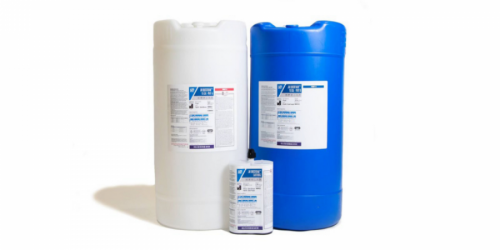Q&A Forums
cc spf thickness in basement walls Post New Topic | Post Reply
| Author | Comments |
|---|---|
|
kay reagon
Posted: Sep 16, 2007 08:58 PM
|
cc spf thickness in basement walls
WE had a new constuction home spray foamed last week.the contract states basement (concrete walls) will be sprayed at an avg depth of two inches with closed cell foam and all stud walls will be two inch avg , the problem is when my hvac guy with installing the dryer vents he asked how thick the walls were sprayed because when he cut the foam out for the duct he said this is only a half inch at best , so i went through out the basement with a two inch nail checking different walls for foam thickness i found that all of the walls are 1/2 to 3/4 thick at the most, also we had the ceiling in a basement bedroom sprayed with open cell with an avg depth of 5 inches stated, its 3 at best. Now the main floor exterior walls are 2 inches and the second floor ext walls were sprayed @ an avg of two inches along with the attic space/roof line were called for an avg of three inches but its more like an avg of 4 to 5 inches thick. my question is should we call the foam company back and have them re-spray the basement walls to the contract or let it go since they sprayed the roofline thicker? also in the basement ceiling that was sprayed there is a small space appx 1 ft x 1 ft that was totally missed along with a stud cavity that was missing 90% of the foam.sorry for such a long post but this is the first home we had spray foam in and just want it right.Thanks, Kay
|
|
Gerry Wagoner
Posted: Sep 16, 2007 09:38 PM
|
A reputable contractor will appreciate knowing of the skipped spots, and should be happy to repair them. Be polite, and acknowledge that while there is some extra material in the attic, must it come at a cost of being shorted in the basement? Usually 1.5" of closed-cell is adequate for sub-grade basement walls, but if the job was sold at 2" that is what it should have. The nature of foam makes it reasonable to expect an average thickness rather than exact uniformity (you seem to understand this already). When the house is completed, you will greatly appreciate your foamed home, and it is worth the cost of time and money to get the best. Warm regards, oG |
|
mason
Posted: Sep 17, 2007 09:29 AM
|
While basement walls are not as critical as walls above grade and the attic you did not get the what was promised by the contractor. If I were the contractor, I would go back and spray the contracted amount. However, the extra inch in the attic is more valuable than the missing inch in the basement. (I would install foam to the missing areas) There is another item that should be addressed. Sprayfoam applications should not be measured as an average but as a minimum (to within 1/4 inch tolerance). So if the specification called for 3 inches in the attic and there is an average of 4 inches, but low areas of 2 inches of less, those low areas would still require additional foam. |
|
Gerry Wagoner
Posted: Sep 30, 2007 08:38 PM
|
We may be saying the same thing ultimately, Mase. The tolerance parameters are the same, and there is a median point based on the tolerance. Most homeowners understand (or need to) the difference between an average (or median) thickness and a minimum thickness. It is helpful for us as contractors to be clear on whether we are selling a median or minimum thickness. I encountered this distinction way back in 1985, and learned from it. regards, |
|
Tim O'Keefe
Posted: Sep 30, 2007 09:08 PM
|
I wouldn't let it slide. Just because you have three inches one place and one inch in another does that give you 2" that you are paying for. I think if they were light on the depth they should bring it up, and if they were heavy that is their own fault for not watching it carefully. I would never tell a customer that complained about a spot being a little thin that I "made up for it someplace else" Tim Granite State Spray Foam Co. |
|
mason
Posted: Oct 01, 2007 08:26 AM
|
I can see both Olger's and GraniteFoam's point on this one. It is true that the owner may let it slide if the minimum thickness is not critical to the performance of the building, and correcting the situation would require an expensive retrofit. But when I was contracting, my rule was anything less than a 1/4 tolerance was unacceptable and I would spray the additional foam. I guess because so much of our work was in cold storage facilities and if you didn't have the contracted amount of insulation serious consequences could occur. If the thickness is tied into more critical factors, such as the minimum insulation required to prevent condensation or to allow the HVAC system to perform properly, the extra foam definitely must be sprayed. |





























